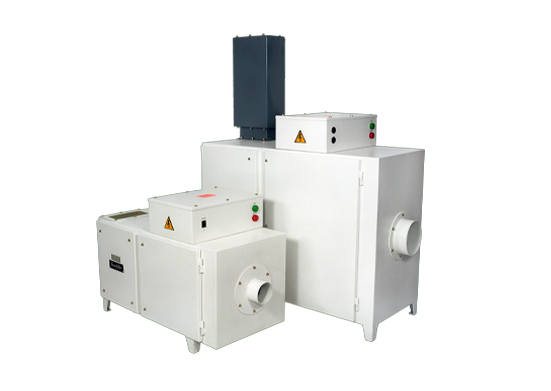An oil mist collector is a vital piece of industrial equipment designed to capture and remove airborne oil mist, smoke, and other fine particulate matter generated during various machining and manufacturing processes. This innovative technology plays a crucial role in maintaining a safe and clean working environment, ensuring worker health and safety, and improving overall industrial efficiency. In this article, we’ll dwell on the key aspects and significance of oil mist collectors.
Source and Generation of Oil Mist:
Oil mist is produced in a variety of industrial processes such as machining, metalworking, and tooling. These processes involve the use of cutting fluids, coolants, or lubricants to reduce friction, dissipate heat, and extend the life of cutting tools. As these fluids come into contact with high-speed machining operations, they can atomize into tiny droplets, forming oil mist. This mist contains both oil particles and other contaminants, including fine metal dust, which can be harmful to workers’ health and safety.
Health and Safety Concerns:
Exposure to oil mist and its associated particulate matter can have severe health consequences for workers. Inhalation of oil mist can lead to respiratory issues, eye and skin irritation, and long-term health problems, including occupational asthma and lung diseases. Moreover, oil mist can accumulate on machinery, floors, and surfaces, creating slippery conditions that can lead to accidents and workplace injuries.
The Role of Oil Mist Collectors:
Oil mist collectors are specifically designed to address these concerns by effectively capturing and removing oil mist and airborne particulates from the workplace air. They employ various techniques, including mechanical filtration, centrifugal force, and electrostatic precipitation, to achieve this goal. Here’s how they work:
- Mechanical Filtration: Many Oil mist collectors use a series of filters, often including pre-filters and main filters. The pre-filters capture larger particulate matter, while the main filters are designed to capture the smaller oil mist droplets. These filters can be made of various materials, such as fiberglass, polyester, or HEPA (High-Efficiency Particulate Air), depending on the specific application.
- Centrifugal Force: Some mist collectors utilize centrifugal force to separate oil mist from the air stream. The mist-laden air is directed into a rotating drum or chamber, where centrifugal force causes the oil droplets to be collected for disposal.
- Electrostatic Precipitation: In electrostatic Oil mist collectors, an electric charge is applied to the oil mist particles, causing them to be attracted to oppositely charged plates or electrodes. This technology is efficient in capturing both fine oil mist and particulate matter as these provide a higher capture efficiency proving to be a better choice for industries.
Benefits and Significance:
Oil mist collectors offer a range of benefits and are highly significant in industrial settings for several reasons:
- Worker Health and Safety: By removing oil mist and airborne contaminants from the workplace air, these collectors help protect the health and safety of employees. This is particularly important in industries where workers are exposed to oil mist on a daily basis.
- Environmental Compliance: Many regions have strict environmental regulations regarding the emission of oil mist and particulate matter. Oil mist collectors help industries comply with these regulations and avoid fines or penalties.
- Machine Maintenance: Accumulated oil mist can damage machinery and lead to decreased equipment lifespan. Oil mist collectors help prevent this by reducing the presence of mist in the workspace.
- Improved Product Quality: In industries such as metalworking and electronics manufacturing, oil mist can settle on sensitive components and affect product quality. Collectors help maintain clean production environments and ensure product consistency.
- Energy Savings: Some oil mist collectors incorporate energy-efficient designs, such as variable-speed fans, which reduce power consumption, contributing to cost savings and environmental sustainability.
Diverse Applications:
Oil mist collectors find applications in a wide range of industries, including automotive manufacturing, aerospace, machining, and metalworking, where the generation of oil mist is common. They are used in machining centers, CNC machines, grinding operations, and other equipment to ensure a cleaner, safer working environment.
In conclusion, oil mist collectors are indispensable tools in modern industrial settings, where the control of airborne oil mist and particulate matter is crucial for worker health, environmental compliance, and efficient manufacturing processes. These devices play a significant role in mitigating health and safety risks, preserving machine integrity, and improving overall industrial productivity. As industries continue to evolve, the importance of oil mist collectors in maintaining clean and safe workspaces remains paramount.
Visit us: https://www.powertechindia.com





